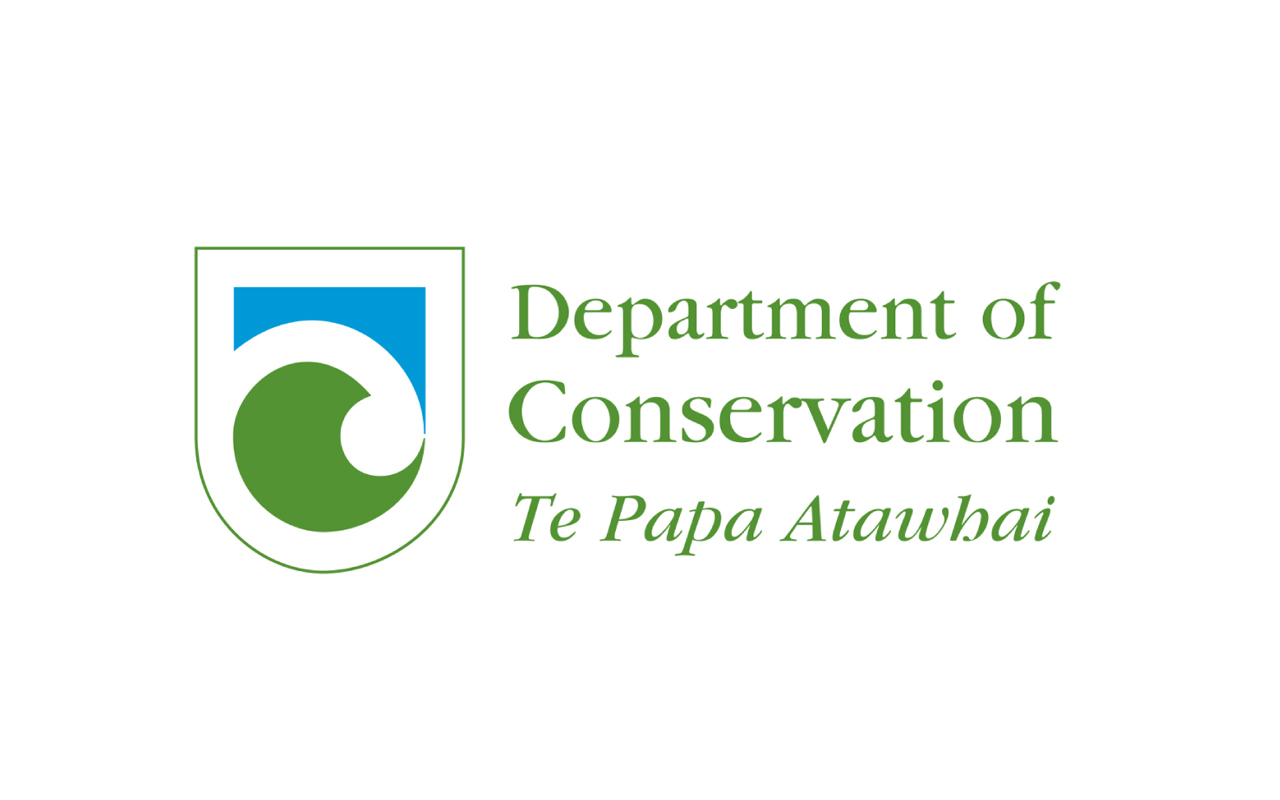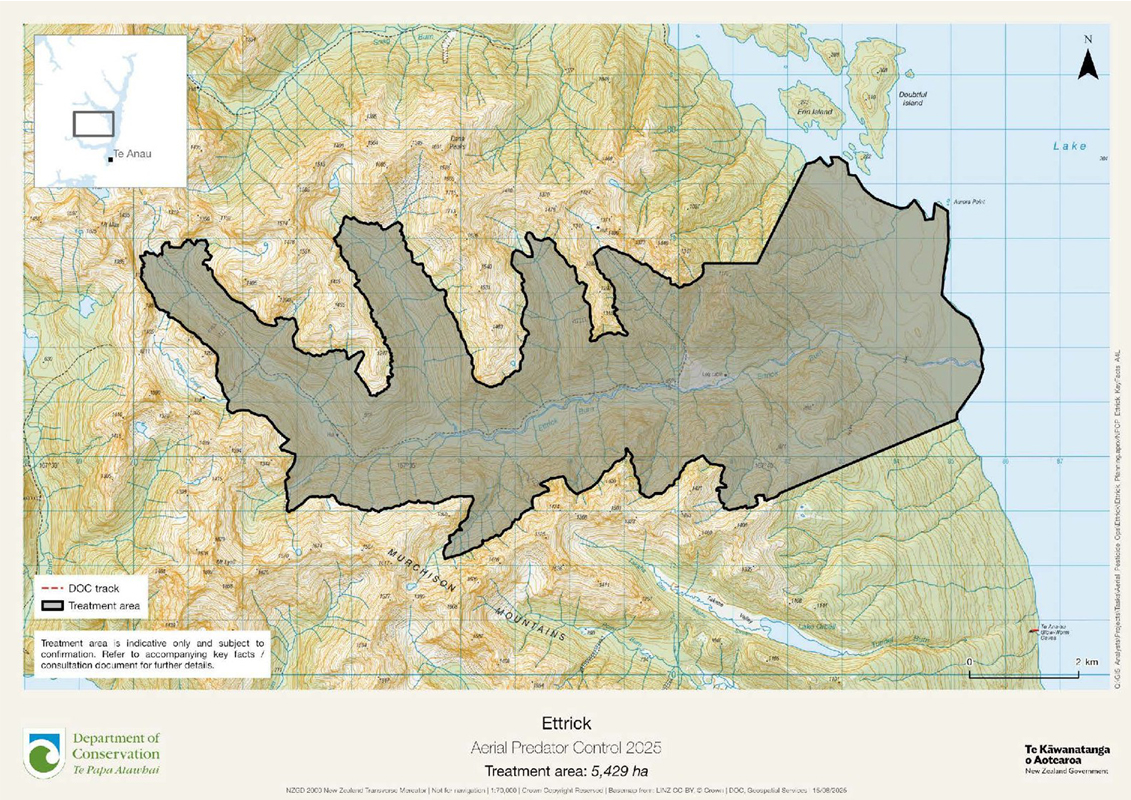Protecting native species with pest control in the Ettrick Burn, Murchison Mountains
17 October 2025, 12:01 PM

The Department of Conservation (DOC) plans to reduce rat numbers over 5,429 hectares. This is scheduled for the first clear weather window between 1st November 2025 and 31st January 2026.
Native wildlife and forests need protection
Rare and special southern lesser short-tailed bats live in the Ettrick Burn. They only remain at two sites in the South Island: the Eglinton Valley and the Ettrick Burn in the Murchison Mountains. This small, vulnerable population could face extinction if predating rats are not effectively controlled.
Why are we controlling introduced predators?
A significant beech tree mast event is predicted for Fiordland, which will result in a surge in rat populations. To protect bats and other native wildlife, we need predator control. In the nearby Eglinton Valley, studies demonstrate that bat populations significantly benefit from predator control operations using 1080.
While there is a potential risk to individual takahē from 1080 cereal baits, we have planned mitigation to reduce this risk, include timing and area of operation, potential relocation of birds and monitoring using transmitters.
Our plan to protect native species
The safest and most effective method we have to control introduced predators over large areas is to use biodegradable cereal bait pellets containing 1080. This bait targets rodents and possums. Stoats are also controlled through secondary poisoning as they feed on the carcasses of the dead rodents.
Helicopters will accurately distribute bait across 5,429ha of the forest area along pre-determined and monitored flight paths using technology that enables accurate placement. This is the safest and most effective way to control predators in the Ettrick Burn area due to the vast and rugged terrain.
Ground-based trapping and bait stations are effective in smaller more accessible areas; however, the number of predators can overwhelm trapping networks.
There is an existing large-scale stoat trapping network in the Murchison Mountains including the Ettrick Burn that will continue during the aerial control.
We will measure the success of the operation by monitoring bats and tracking rats. We aim to keep detections of rats below a 5% threshold after the operation. We also aim to see zero or limited annual population decline of the short-tailed bat population.
This operation begins with the distribution of non-toxic pre-feed bait pellets (sandy coloured). This prepares possums and rodents to eat the toxic bait (dyed green) that is applied afterwards. Both baits are about 16 mm in diameter and cylindrical shaped.
Consultation and permissions
DOC has consulted with hapū, iwi and key stakeholders including landowners adjacent to the treatment area. This involved discussing the operation plan, listening to any concerns and considering ways to mitigate them.
DOC is delegated authority by the Environmental Protection Agency to decide applications for permission to use 1080 on land administered or managed by DOC. DOC will hold this permission and will also hold the required permission from the Ministry of Health. DOC ensures that all legal and policy requirements are met, and that any potential risks of the operation are managed.
Managing risk
1080 is poisonous to humans, domestic and game animals. In areas where the toxin has been applied, dogs are highly at risk until poisoned carcasses have disintegrated. This takes four-to-eight months or longer.
There will be warning signs placed at entrances to the treatment area immediately prior to the operation.
Risks can be eliminated by following these rules:
DO NOT touch bait
WATCH children at all times
DO NOT EAT animals from this area or within the buffer zone outside the treatment boundary. The buffer zone is 2 km for deer and pigs, 200 m for rabbits, and 1 km for hares, tahr, wallabies and possums.
Poison baits or carcasses are DEADLY to DOGS
Observe these rules whenever you see warning signs about pesticides. These signs indicate pesticide residues may be still present in baits and poisoned carcasses. When signs are removed, normal activities can resume. If in doubt, check with your local DOC office. Please report suspected vandalism or unauthorised removal of signs.
If you suspect poisoning, please contact:
- Your local doctor or hospital OR The National Poisons Centre: 0800 764 766 (urgent calls) or 03 479 7248 OR dial 111
- Seek veterinary advice for suspected poisoning of domestic animals.
For further information please contact:
Operational Planner, Department of Conservation, Lake Front Drive, Te Anau. [email protected] / 03 249 0200
OR
Contract Wild Animal Control New (NZ) Ltd, [email protected] / 0800 292 269
Visit the DOC website: More information about DOC’s National Predator Control Programme is available on our website www.doc.govt.nz/our-work/national-predator-control-programme
Map of predator control area within the Ettrick Burn:
This map shows the area we are controlling possums, rats and stoats to protect native species. You can also see operational updates and detailed maps of predator control on public conservation land on the DOC website. www.doc.govt.nz/nature/pests-and-threats/pesticide-summaries
